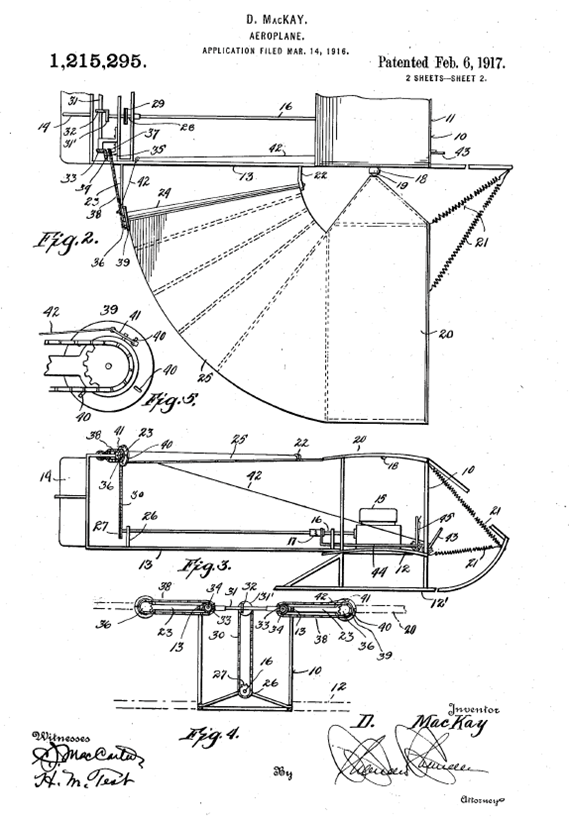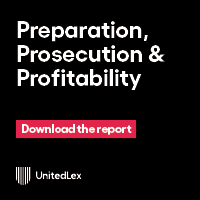| NAPP eNews™/FEB/2017 |
|
Dear NAPP Members, I hope 2017 has been successful for all so far. As we move forward as an organization, we will have voice in shaping patent policy. Please do not hesitate to forward your thoughts. By the time you read this, the board will have conducted a strategic planning session as an adjunct to its most recent board meeting. A combined January/February board meeting was held January 26. We are also planning a 2-day strategy session in Raleigh March 22-23. If there are topics you feel important to NAPP deserving of our attention at the March strategy session, by all means let me know. USPTO Director and Commissioner of Patents I have changed this paragraph many times, but by all accounts it seems Michelle Lee will be staying on as Under Secretary of Commerce for Intellectual Property and USPTO Director. How long is the question. Assuming there will be a change at some point, it is incumbent upon us to be ready to suggest as an organization who we might consider a worthy replacement. Commissioner for Patents Drew Hirshfeld would step-in as acting director, under procedures put in place previously, should Director Lee step down without a ready replacement. Assuming that Director Lee resigns or is replaced, many names have been circulating as replacements. Some argue we need a person in the Director’s position needs to be more than a career politician familiar with patents, someone who is also an inventor and has used patents in a start-up business. I believe there is merit in that, however, there are some very good patent counsels in large organizations as well. Although there are several NAPP members I could recommend, stepping outside of NAPP, I would like to propose that Hope Shimabuku, the current Director of the Dallas Regional Office, and current chair of the State Bar of Texas IP Section would be an excellent choice. Hope is well-informed, well-intentioned, and understands the importance of valid patent rights to all parties. Hope previously worked for Xerox and Dell Computers, and has a mechanical engineering degree. Randall Rader, former chief judge of the Federal Circuit comes to mind, and anyone who was at the NAPP Annual Meeting and Conference last July and listened to Judge Rader could feel his passion for patents. Sharon Israel, former president of AIPLA is very well spoken of in Texas patent circles, and would also make an excellent Director. Sharon previously was a law clerk to Judge Lourie of the Federal Circuit, and has MBA and EE degrees. Patent Eligibility Continuing my discussion from last month, there was a non-precedential opinion from the Federal Circuit in Trading Technologies v. CQG (Judge Newman wrote the opinion, joined by Judges O’Malley and Wallach) that summarizes her thoughts on Section 101, and largely parallels my thinking. The case concerned U.S. Patents No. 6,772,132 and No. 6,766,304, related to a computerized method and system used for trading stocks and similar products. Dennis Crouch has urged the patentees to seek to make the opinion precedential. In any case, if you missed his post of January 19, here are some of the statements by Judge Newman: “For Section 101 purposes, precedent does not consider the substantive criteria of patentability…. We reiterate the Court’s recognition that “at some level, all inventions . . . embody, use, reflect, rest upon, or apply laws of nature, natural phenomena, or abstract ideas.” Alice, quoting Mayo. This threshold level of eligibility is often usefully explored by way of the substantive statutory criteria of patentability, for an invention that is new, useful and unobvious is more readily distinguished from the generalized knowledge that characterizes ineligible subject matter….the public interest in innovative advance is best served when close questions of eligibility are considered along with the understanding flowing from review of the patentability criteria of novelty, unobviousness, and enablement, for when these classical criteria are evaluated, the issue of subject matter eligibility is placed in the context of the patent-based incentive to technologic progress.” I believe what the court is trying to say is that it is OK to consider 102, 103, and 112 issues in close 101 questions to determine if the subject matter is “new and useful” as required by section 101, but if there is little doubt that the claim on its face recites “specific technologic modifications to solve a problem or improve the functioning of a known system”, the court will assume the subject matter is “new and useful” for 101 purposes, and if the claim on its face recites either a process, machine, manufacture, or composition of matter, or improvement thereof, the claimed subject matter should conclusively be deemed patent-eligible (and there is no need to resort to Alice and Mayo analysis). The USPTO 101 guidelines refer to a “streamlined analysis.” While not exactly the same (the USPTO uses the term “tie up” – “For purposes of efficiency in examination, a streamlined eligibility analysis can be used for a claim that may or may not recite a judicial exception but, when viewed as a whole, clearly does not seek to tie up any judicial exception such that others cannot practice it. Such claims do not need to proceed through the full analysis herein as their eligibility will be self-evident.” - USPTO December 2014 Interim Examination Guidance), the court is not too subtly hinting that the USPTO should use this procedure more. Too few claims have been analyzed by examiners under one of these streamlined analysis, in my opinion. (“Tie up” is an unfortunate use of terminology for me in the context of patent claims – a patent owner can license rights royalty-free if they choose, and a patent guarantees no right to the owner to market any products – that is the realm of other government authorities – FDA, consumer laws, etc. Not to mention that post-grant challenges may prove terminal to the patent itself.) Jepson Claims Alive and Well A recent article I read from our NAPP Lexology feed concerned infringement of a Jepson claim. Jepson claims are generally looked at as a kind of poison or taboo, but this case shows they may be very useful (keep that continuation handy though!). The Federal Circuit (Chief Judge Prost, joined by Circuit Judges Newman and Dyk) upheld validity and infringement. The patent (US 7772209) was from a corporate pharma giant, Eli Lilly, and read as follows: The primary issue on appeal was whether the defendant Teva had induced infringement, and I will not go into detail on that. My point here is that a very large corporate client saw fit to use the Jepson claim format, and won! Eli Lilly & Co. v. Teva Parenteral Medicines, Inc. Annual Meeting and Conference Please consider attending the 2017 AMC in San Jose July 27-29, 2017. The theme will be “Uncharted Frontiers”, reflecting that we are under the new Trump administration, as well as 35 USC 101, 112, and the written description requirement, especially for design patents. Thanks to Lisa Adelson and her Committee for their work thus far. Speakers are being contact and the hotel has been narrowed down to two, as I understand it. As soon as we have nailed down the hotel contract we should be ready to open registration soon afterward. NAPP Member Survey Thanks to all who responded to the recent membership survey. It is important to hear your thoughts as we move forward. NAPP strategy depends on what the membership would like the board and committees to consider and ultimately implement. No surprise, the main concerns expressed by members continue to be the Patent Practice Forum and other forums, the Annual Meeting, and malpractice insurance. Interestingly, a slightly higher percentage of responses expressed more interest in the Annual Meeting than MP insurance. Perhaps this is because we are not doing enough to seek lowest rates for our members on same coverage. We are working on this at the committee level, and I want to thank Dan Beinart and his Member Benefits Committee for working on this issue, as well as the Patent Practice Forum issue. Mentoring There has been much discussion on this topic in the past, and this subject always crops up on my radar at least 2-3 times per year from a new member. Some members would like to have a formal, NAPP-sponsored mentoring program. However, despite the good that can come out of such programs, I have been made aware of other organizations that have had some difficulties in implementing a mentoring program, such as what happens when the mentor or mentee is dissatisfied with their counterpart and wishes to change, change procedures, and complaint handling. These all require administration, costing time, money or both. In the short term, one idea may be to implement on NAPP.org something akin to the State Bar of Texas (SBOT) “Ten Minute Mentor”. I have attached a link to the SBOT Mentoring site, and a specific sample (comparing federal and state court practice in Houston). They are free and open to the public. I’m sure there are others; you may check the state bar in your area. Neither NAPP nor I warrant the accuracy of these articles. Not legal advice. State Bar of Texas | Mentoring 10 Tips for Your Practice in Federal Court Looking Back at Past Predictions on Patent Practice; “Made in the United States” Back in 2012 I made a presentation on patent practice to a meeting of chemical engineers, discussing how patent practice has changed over my career, and how I thought it would change going forward. It is interesting to look at those past predictions. One prediction I made was that trade secrets would become more valuable, and we have arguably seen this in enaction of the Defend Trade Secrets Act of 2016 (DTSA), creating a federal jurisdiction for trade secret theft. But it must be understood that it is not simply because it has become harder to obtain a US patent, or that secrets are inherently more valuable now, that there is more focus on trade secrets; the AIA also increased the reach of “prior user rights.” 35 U.S.C. 273. The prior user defense is now available if the alleged patent infringer “commercially used the subject matter in the United States” > 1 year before the earlier of when the patent was filed and any inventor’s grace period under 102(b). Contrary to pre-AIA law, prior user rights are no longer limited to commercial use of a method (nor are “methods” limited to business methods), but now includes subject matter consisting of a process, or consisting of a machine, manufacture, or composition of matter used in a manufacturing or other commercial process. The net effect on U.S. patents of moving more manufacturing to the United States may thus be the ability to avoid U.S. Patent infringement! This does not make good sense to me. Certainly there will be inventions from those whose jobs were transferred to the U.S. Will those managing such inventions (also knowing the likelihood is low that they will be able to enjoin an infringer because of eBay) be encouraged to simply “keep it to themselves” and not seek patent protection, knowing they can later hold up their hand and shout “look we were doing this before, we cannot be an infringer?” On this date in history… I’m not sure I would want to fly in it!
We hope you enjoy this and future editions of NAPP eNews! If you have content you would like share, such as interesting patents, inventors, and other matters of general interest, especially patenting tips, please forward them to our Executive Director John Meidl at [email protected], or the board at [email protected]. Respectfully, Jeffrey L. Wendt
|

 NAPP eNews™ for February 1, 2017
NAPP eNews™ for February 1, 2017
